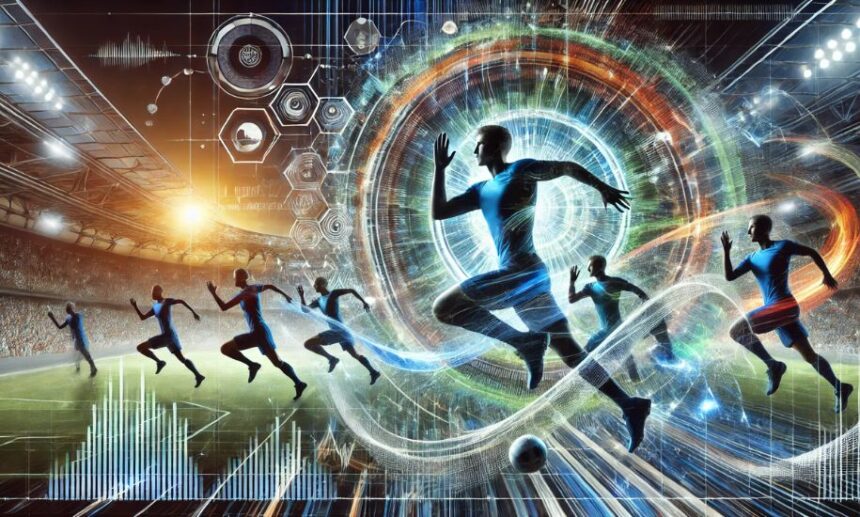In the dynamic world of sports, the pursuit of enhancing performance and preventing injuries is ever-present. As innovation continues to redefine how athletes train and compete, “harmonicode sport” emerges as a revolutionary concept. Combining the principles of harmony, biomechanics, and coding, harmonicode sport introduces a novel framework to elevate athletic achievements. Market Blick explores this fascinating blend of technology and physical performance.
What is Harmonicode Sport?
Harmonicode sport is a groundbreaking approach to athletics that integrates harmony and coding principles to optimize movement, precision, and performance. It draws upon insights from biomechanics, sports science, and data analysis to create a system where every motion is fine-tuned for efficiency and effectiveness. By leveraging advanced technology, harmonicode sport emphasizes:
- Synchronization: Ensuring athletes’ movements align with optimal biomechanical patterns.
- Data-Driven Analysis: Utilizing real-time feedback and predictive algorithms to refine techniques.
- Holistic Training: Focusing on the interplay of physical, mental, and emotional factors for peak performance.
The Origins of Harmonicode Sport
The concept of harmonicode sport stems from the intersection of human kinesiology and computational technology. Researchers and sports scientists sought to answer a critical question: How can we decode the “rhythm” of human motion to achieve unparalleled athletic efficiency? By applying coding methodologies to study movement, they discovered ways to harmonize actions with natural biomechanical tendencies, minimizing strain and maximizing output.
Market Blick highlights that the early adoption of harmonicode sport principles revolutionized training regimens across various disciplines, from track and field to team sports like basketball and soccer.
Core Principles of Harmonicode Sport
1. Harmony in Motion
At its core, harmonicode sport champions the idea of movement harmony—aligning an athlete’s body with natural biomechanical rhythms. This reduces the risk of injuries and enhances endurance. Techniques such as video gait analysis and motion capture technology are employed to map these rhythms accurately.
2. Data Integration and Predictive Insights
Real-time data collection plays a pivotal role in harmonicode sport. Advanced sensors and wearable devices gather metrics like muscle activity, joint angles, and force distribution. Algorithms then analyze this data to predict potential inefficiencies or risks, enabling athletes to adjust their techniques promptly.
3. Mental and Emotional Balance
Athletic success often hinges on more than just physical prowess. Harmonicode sport incorporates methods to maintain mental clarity and emotional stability. Techniques such as mindfulness, neurofeedback, and cognitive training are integral to achieving a harmonious state.
4. Adaptive Training Protocols
Each athlete is unique, and harmonicode sport recognizes this individuality by tailoring training programs to specific needs. Through AI-driven platforms, coaches and athletes can develop personalized routines that adapt to performance metrics over time.
Applications of Harmonicode Sport in Modern Athletics
Individual Sports
In sports like swimming, running, and gymnastics, harmonicode sport has enabled athletes to fine-tune their techniques. Swimmers, for instance, can analyze stroke mechanics to achieve optimal propulsion with minimal resistance, while runners benefit from insights into stride efficiency.
Team Sports
Team sports such as soccer, basketball, and rugby also benefit from harmonicode sport. By analyzing players’ movements and interactions, teams can develop strategies that maximize group cohesion and efficiency.
Rehabilitation and Injury Prevention
Harmonicode sport is not limited to peak performance; it’s also instrumental in rehabilitation. By studying motion patterns, therapists can design recovery plans that restore functionality while preventing re-injury.
The Role of Technology in Harmonicode Sport
Technology is the backbone of harmonicode sport. Tools such as:
- Wearable Sensors: Track real-time physiological and biomechanical data.
- Motion Capture Systems: Provide detailed analyses of movement patterns.
- AI-Powered Platforms: Offer predictive insights and training recommendations.
Market Blick notes that these advancements bridge the gap between theoretical knowledge and practical application, making harmonicode sport accessible to both elite athletes and enthusiasts.
Benefits of Harmonicode Sport
Enhanced Performance
By identifying inefficiencies and harmonizing movements, athletes can achieve new performance heights. This applies not only to elite competitors but also to recreational participants seeking improvement.
Injury Reduction
One of the standout advantages of harmonicode sport is its focus on injury prevention. By aligning movements with natural biomechanical tendencies, athletes experience less strain and wear over time.
Comprehensive Development
Harmonicode sport promotes a holistic approach that considers physical, mental, and emotional dimensions. This ensures balanced development and long-term sustainability in athletic pursuits.
Challenges and Future Directions
While harmonicode sport offers immense potential, its adoption comes with challenges:
- Accessibility: Advanced technology and training systems may be cost-prohibitive for some athletes.
- Learning Curve: Understanding and implementing harmonicode principles require specialized knowledge.
- Standardization: Developing universally accepted frameworks for harmonicode sport is still a work in progress.
Looking ahead, Market Blick predicts that ongoing research and technological advancements will address these hurdles, paving the way for broader adoption of harmonicode sport principles.
Conclusion
Harmonicode sport represents a transformative step forward in the world of athletics. By blending harmony, coding, and sports science, it redefines what’s possible for performance and injury prevention. As technology continues to evolve, harmonicode sport will undoubtedly play a central role in shaping the future of sports.







